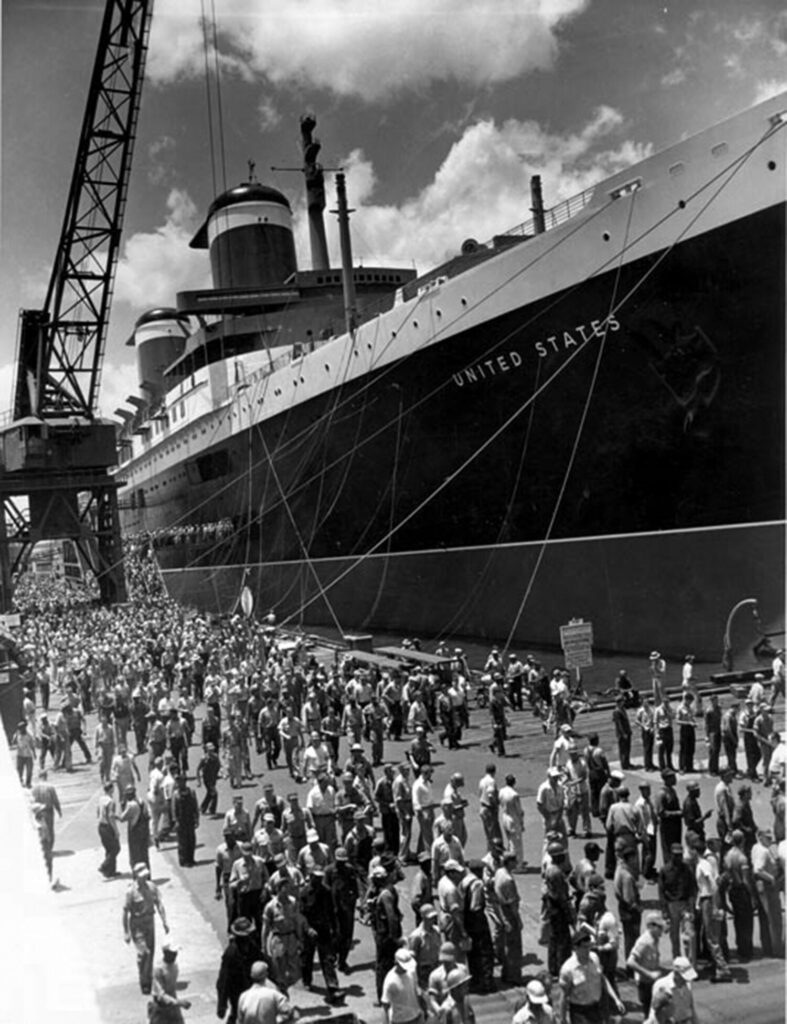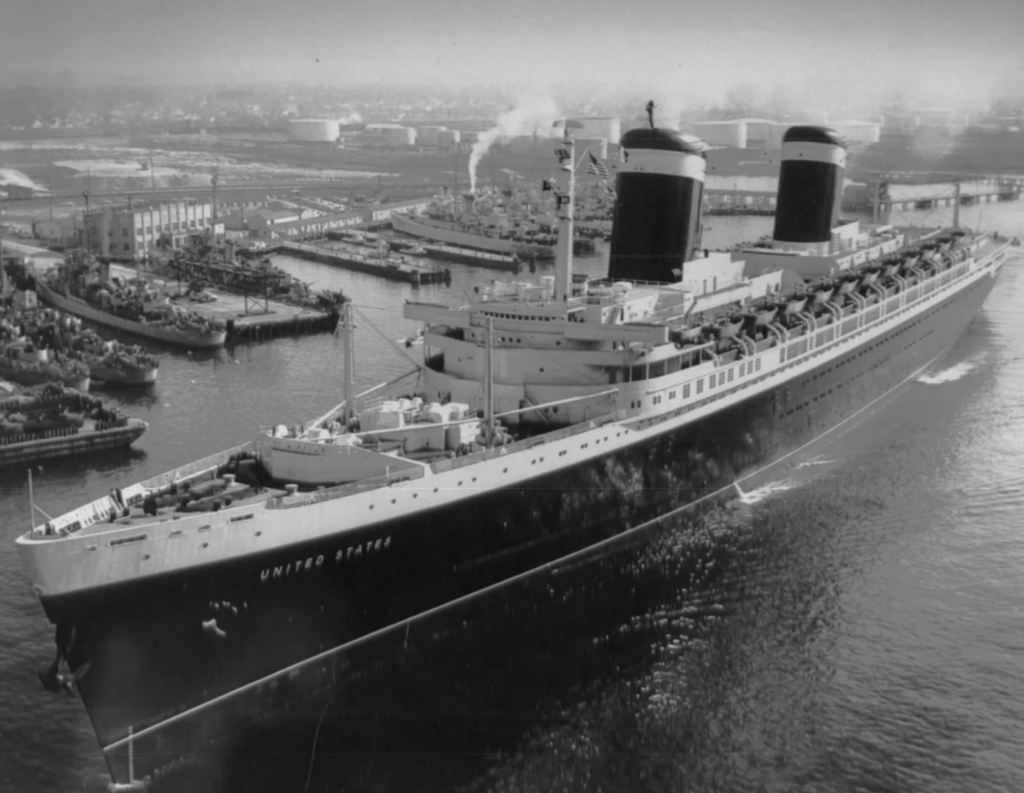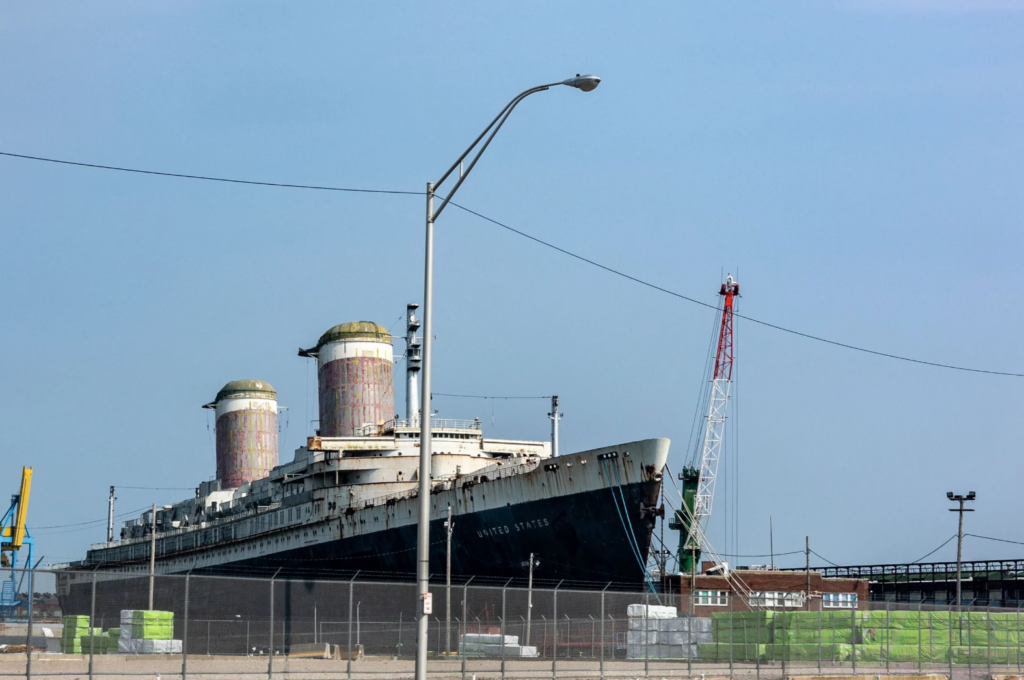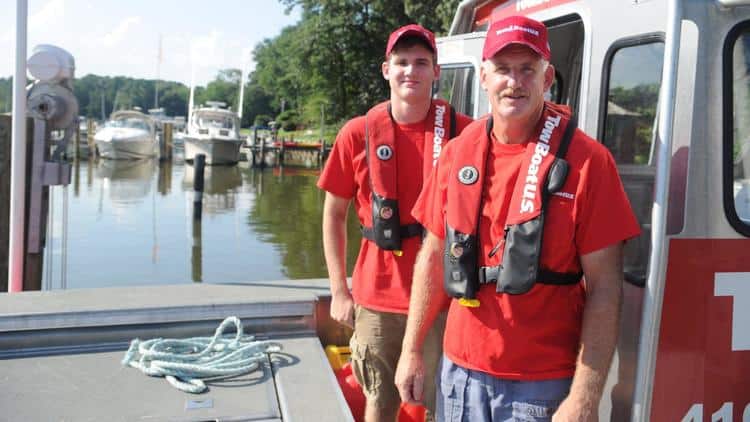She was the fastest ocean liner of her day, and incredibly… still is the fastest. The SS United States still holds the transatlantic speed record for a liner. Soon, she’ll hold a very different record: world’s largest artificial reef.
The United States has been sitting in Philadelphia for years, rusty but structurally sound, with an uncertain future. A contingent contract was just approved to move the ship to Destin-Fort Walton Beach, Florida, where she would be intentionally sunk offshore and transformed into a diving mecca.

It’s a mixed blessing for the nonprofit SS United States Conservancy, which has been on a mission to preserve the SS United States since 1992. The Conservancy was finally able to buy the ship outright in 2011, but never got enough funding to “save” the ship. Then she stood to lose her dockage in Philadelphia. With the plans for an artificial reef, the ship may live on, but not in the way its protectors expected.
The SS United States made history right from its beginning. Its designer, William Francis Gibbs, conducted research for years to make the fastest ship possible. The U.S. realized after World War II that it was valuable to have luxury liners that could be converted into troop ships.
So the United States was designed as top-secret, convertible troop carrier and Cold War weapon that could transport 14,000 troops 10,000 miles without refueling.
The ship was built in secrecy at Newport News Shipbuilding and Dry Dock Company, the first major liner to be built in dry dock. That made it easier to keep prying eyes away. Over 3,100 shipyard workers managed to take the liner from keel-laying to delivery in just two years and three months.
Gibbs used all aluminum to keep the United States light. She was 100 feet longer than the Titanic, and all the furnishings were made fireproof. Almost no wood was used on board, but even the wooden piano was flame-proof.

In her maiden voyage, the United States reached speeds of 36 knots (while in the secretive builders’ trials in 1952, it is said the ship topped out at 38 knots, or 44mph). The ship shattered the previous transatlantic speed record, and the United States record has yet to be broken by another liner.
The ship, nicknamed America’s Flagship, went on to carry four U.S. presidents and movie stars like Marilyn Monroe, Cary Grant, Marlon Brando and Judy Garland (among others). Even the commander of the ship was a celebrity; Commodore Harry Manning had been a co-pilot of Amelia Earhart.
If the SS United States was so famous and record-breaking, why did she end up out of use at a Philadelphia berth? The American jet age rendered her redundant, and the ship was taken out of service and sealed in 1969. The Navy kept her ready until 1978, according to the Conservancy, then sold the ship. A series of private owners each had big plans for the United States, from seagoing time-share condominiums to a running mate for the QE2. Most recently, Norwegian Cruise Line bought the liner in 2003 and planned to rehabilitate it for cruise service, but the Great Recession put an end to those plan.
While Destin-Fort Walton Beach sees the planned artificial reef as a major tourism boon, attracting divers and anglers from around the world as diverse marine life takes up residence in the sunken ship. The contingent deal with the Okaloosa County Board of County Commissioners would also include funding for an on-land museum to commemorate the history of the SS United States.
The deal hinges on the current U.S. District Court-imposed mediation and could close in the coming weeks. It would be towed from Philadelphia, then prepared in Alabama for her sinking. The cost of buying, remediating, moving, and sinking the historic ocean liner, along with the land-based museum, is conservatively estimated a $10.1 million. The process is expected to take between 18 months and two years. The exact location for the ship’s deployment to the sea bottom hasn’t been determined yet.
Editor’s note: As of late Dec. 2024, the SS United States remained at her Philadelphia pier because of a Captain of the Port order deeming the ship too unstable to be towed south. A Coast Guard inspection found the United States could pose a hazard to waterways.
“Having the title of the World’s Largest Artificial Reef continues to elevate Destin-Fort Walton Beach
as a premier destination to visit for scuba diving and fishing. The SS United States will be an exciting
addition to the many artificial reefs and wrecks available in Destin-Fort Walton Beach for divers to
explore while providing essential habitat for the fishery that our fleet is so dependent on,” said
Jennifer Adams, Tourism Director.
For the SS United States Conservancy, this solution for the ship is better than the alternative:
“While the Conservancy has worked tirelessly for over a decade to secure a new home for the SS
United States and repurpose the historic ocean liner as a floating, mixed-use development, a
challenging Court- order evicting the ship from her current pier has compelled us to explore this
alternative to scrapping,” says Conservancy President Susan Gibbs.
The Conservancy is optimistic about the planned museum that could incorporate iconic components from the ship (like its radar), and give the public access to its extensive archival and curatorial collections.
The Mariners’ Museum in Newport News also has artifacts and photos from the SS United States available to see.




